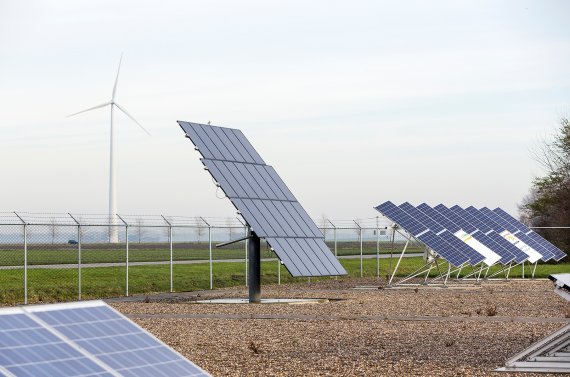Spruijt studied the prospects for solar panels at Applied Plant Research (PPO) in Lelystad. She bases her calculations on trials with various different solar panels on the 500 m2 solar meadow belonging to ACRRES, Wageningen UR’s sustainable energy research centre in Lelystad. An efficiently laid out meadow full of solar panels can produce 500 megawatt hours per hectare per year, she calculated. If you sell that electricity, it brings in more than the total yield of grain or potatoes.
But creating a solar meadow is a big investment. Since it is impossible to recoup that investment when supplying electricity for the standard price, the government has drawn up a subsidy programme called Stimulating sustainable energy production (SDE). The SDE programme compensates the farmer for the difference in cost price between green and grey electricity. The subsidy ranges from 7 percent per kWh in March to more than 14 percent in November. So it can pay to wait until the last minute. On the other hand, you do run the risk that the subsidy pot is empty by then. At a basic price of 13 cent per kilowatt hour, you can recoup your investment in solar panels in 11 years, says Spruijt. Given that the subsidy period for solar energy is 15 years, in the last four years you will earn some money.
But creating a solar meadow is not all that easy. First you need an environmental license from the municipality, which can be difficult, and then you have to apply for a subsidy. ‘If as a crop farmer you’ve got some poorer land less suitable for crops like potatoes or onions, investing in solar panels can be an interesting option,’ she concluded. ‘You can spread your income from them so that you’ve got a stable supplementary income even in years when potato or onion prices are low.’

